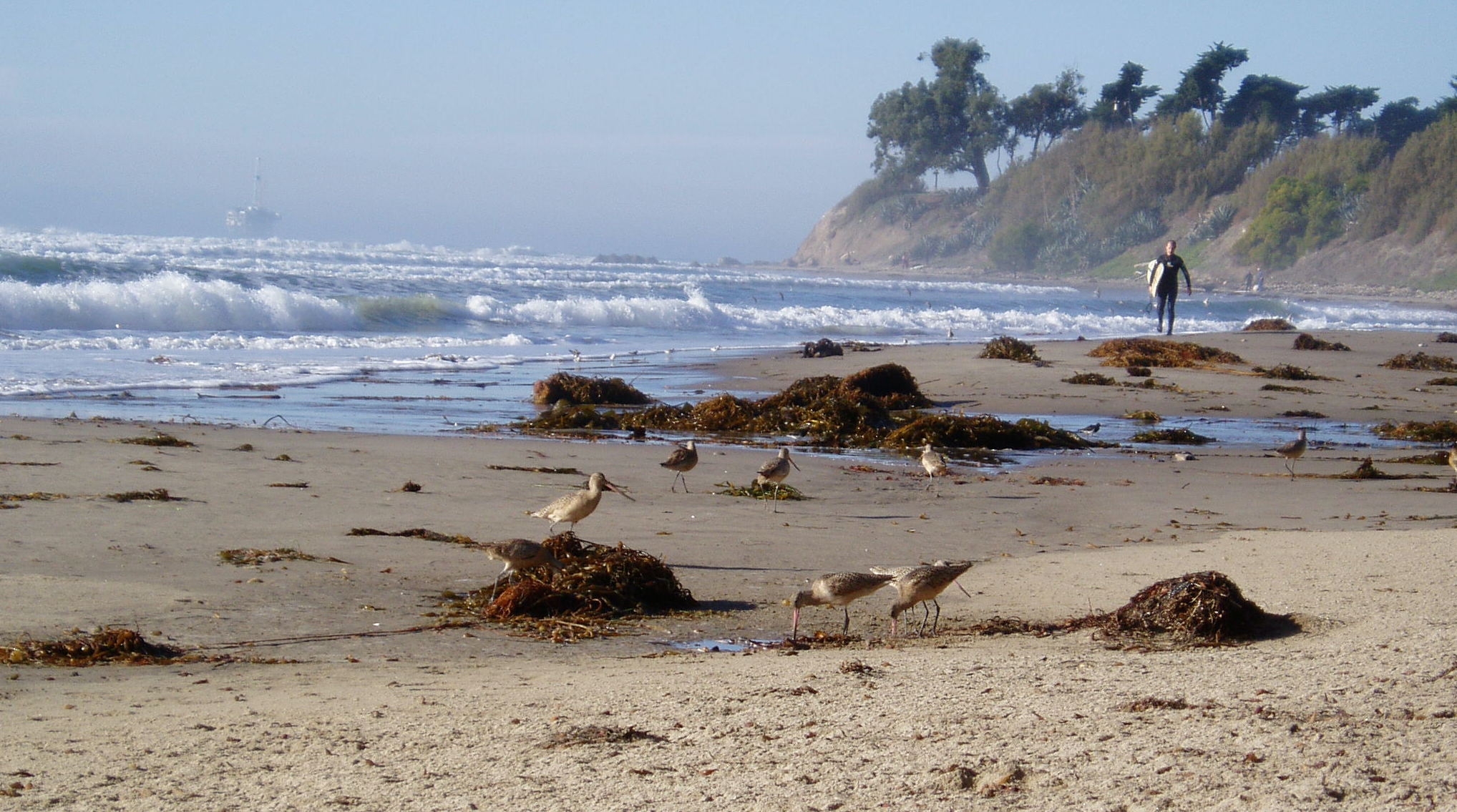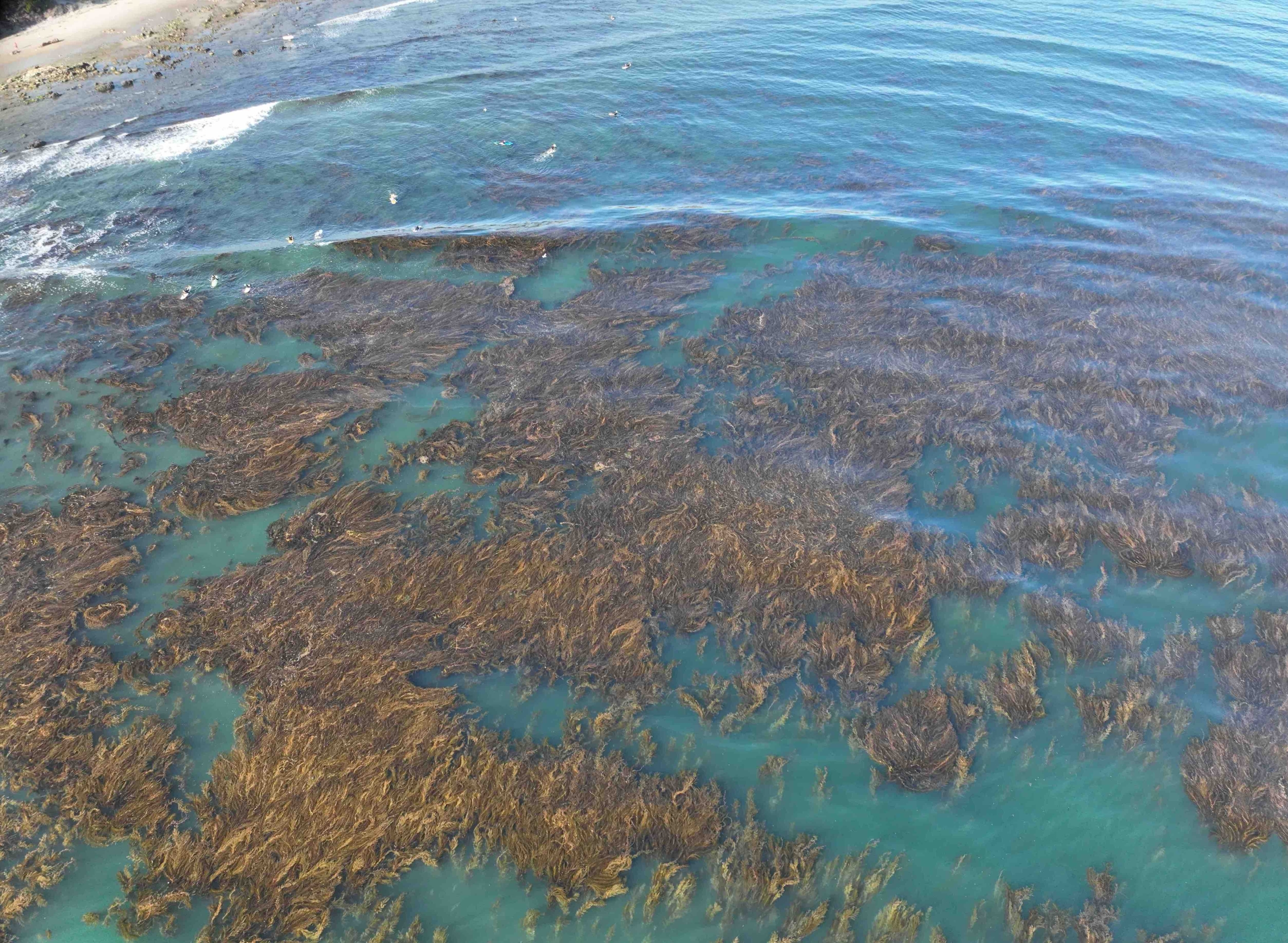
The choreography of cross-ecosystem subsidies that connects the kelp forest to the beach
Though spatially distinct, the Santa Barbara Channel’s subtidal kelp forests and its sandy beaches are intimately connected. Giant kelp (Macrocystis pyrifera), the foundation species of rocky reefs, also serves as a major part of the beach food web when fronds of the giant seaweed break away from the forest and are transported to the beach.
But the relationship goes deeper than that. In a paper published in the Proceedings of the National Academy of Sciences, a collaboration of scientists demonstrate that the kelp forests do more than supply food to the tiny but hungry crustaceans that live in the sand — they can also influence the dynamics of other levels of the sandy beach food web. The findings have implications for the stability of the food web on the beach, and for ecosystems that are heavily reliant on resource inputs from other ecosystems.
“The kelp forest and the beach are both highly dynamic ecosystems,” said UC Santa Barbara coastal marine ecologist Jenny Dugan, who co-authored the paper. “How the dynamics of those two ecosystems interact and behave is the key question here, especially with the beach system so dependent on the kelp forest.”
Using long-term data from UCSB’s National Science Foundation-supported Santa Barbara Coastal Long Term Ecological Research (SBC LTER) site, the team, led by UC Davis quantitative ecologist Jonathan Walter, sought to understand whether and how the drift kelp or wrack that comes from the kelp forests could affect the beach ecosystem’s dynamics — for instance, how species might respond to the changing environment, or how resilient the beach ecosystem is to disturbances.

It’s the cyclical abundance and scarcity of kelp that interests Walter, in particular the emergent phenomenon of synchrony that is produced when populations in an ecosystem rise and fall in unison.
“In this example,” he said, “the amount of kelp on the reef changes through time in a way where the peaks in abundance and the low points in abundance across several kelp forests are matched together in time. That’s what we refer to as synchrony.” Though a natural and ubiquitous phenomenon, synchrony and its implications are not yet fully understood.
The research team’s model was built on a time series of wind, wave, wrack and beach width data at five sandy beaches over several timescales covering 11 years. It revealed patterns of synchrony — where the abundance of kelp wrack on beaches could be explained by kelp abundance in the forest, wave action and beach width fluctuating together. At the longest timescales, kelp forest biomass and beach width were the biggest drivers of kelp wrack on the beaches.
“We found time lags in this synchrony that were important,” Dugan said. “It wasn’t as simple as everything changing at the same time — it was like separate songs or melodies that came together in different ways. This made the patterns more complex, which is why it required the type of analyses we used.”
Importantly, the researchers found, this synchrony crossed from ocean to shore in the form of the abundance of predatory shorebirds, like sandpipers and plovers, that lagged behind the deposition of wrack on beaches.
“Once on the beach, kelp wrack feeds a highly productive community of small invertebrates — crustaceans and insects — that are in turn a favorite food of shorebirds,” Dugan explained. The cross-system synchrony is particularly notable in this case because the beach ecosystem relies so heavily on kelp subsidies, she added.
The discovery of synchrony’s role in the ecosystems fills a key knowledge gap in the understanding of the connection of reef and beach, noted Walter.
“We knew both systems to be dynamic,” he said. “We knew there were important links between them, but the fact that we could pull this out and see similar things happening over a larger area and show that synchrony was related to this coupling between the kelp forest and the beach, and that this cascades up through the food web to the shorebirds, helped to bring it home.”
What makes the SBC LTER and the time series data it collects particularly valuable is the ability it gives scientists to identify and study patterns that likely exist but are not as easily discerned in other ecosystems where these data are not available.
“The dynamic nature of kelp forests, in terms of their high productivity and turnover, is unique for ecosystems structured around foundation species,” said co-author and coastal ecologist Kyle Emery, a researcher in the UCSB Marine Science Institute. “It allows us to observe change many times over compared to other foundation species and gives us the ability to observe many different system states, processes and functions. This enabled us to more rapidly analyze these questions of cross-ecosystem synchrony.”
Synchrony is also something to bear in mind as the climate shifts in ways that might change how the linked ecosystems perform their functions.
“It’s related to the ability of these systems to persist in the face of changing environmental conditions,” Walter said. If the kelp forests were too synchronous in their abundance and scarcity, he explained, the likelihood that one kelp forest could be rescued by propagules dispersed from another forest diminishes. And that has implications for the food web onshore. A little asynchrony allows the systems to be resistant to fluctuations and therefore more stable, he said.
Sonia Fernandez
Senior Science Writer
(805) 893-4765
sonia.fernandez@ucsb.edu



